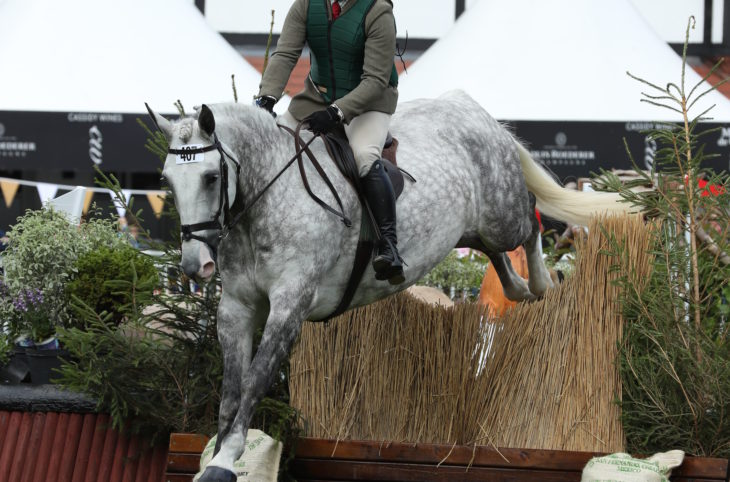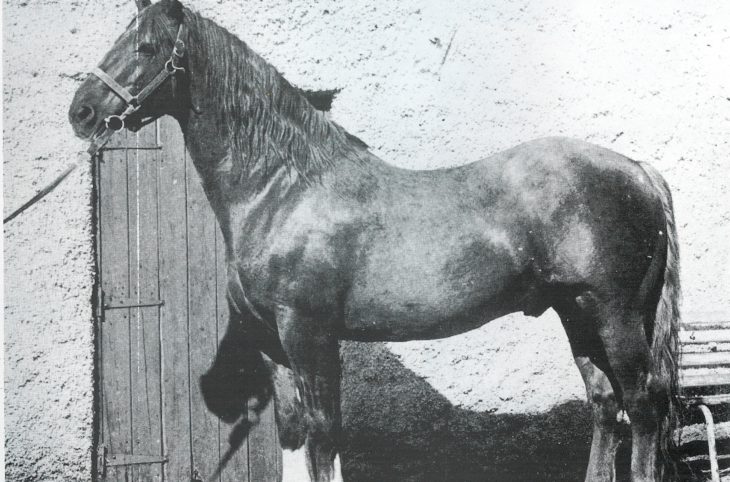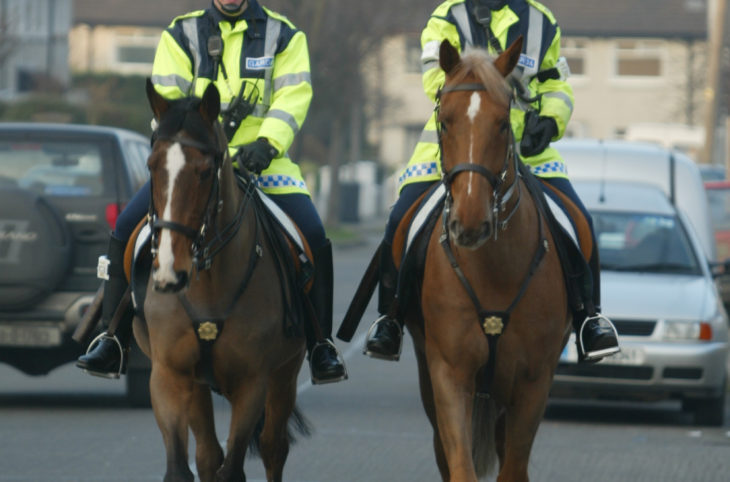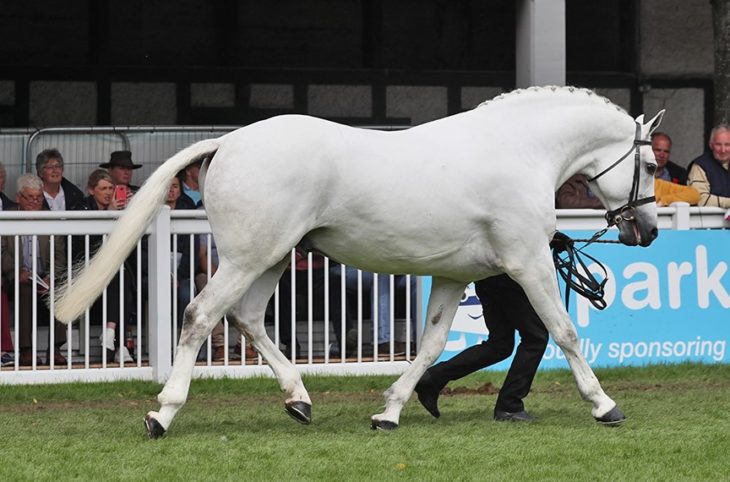Irish Draught
The Irish Draught Horse developed as a working horse on Irish farms with references to the breed dating as far back as the 18th century. Irish farmers developed an adaptable draught horse capable of carrying farm working, alongside used for riding, hunting and driving. Consequently, the Irish Draught Horse is a versatile, powerful and athletic animal with substance and quality. It has a pleasant head, good bone and a short shin, good spring of rib, strong loins and hindquarters and an active powerful stride.
Known for its good temperament, docility and willing nature, it has a robust constitution and is inherently sound. Irish Draughts are often used for crossing with other breeds to produce all types of leisure and performance horses. Modern uses of the breed include the Garda Síochána Mounted Unit, which is exclusively compiled of Irish Draught horses.
Prolific Irish draught stallions include King of Diamonds and Clover Hill, whom both excelled in jumping spheres. King of Diamonds was 21st in the WBFSH showjumping rankings from1992 –2001 on the basis of 19 of his progeny. Clover Hill ranked 4th in the 2001-2002 WBFSH show jumping rankings, with 39 offspring jumping at international levels. Between them they have over 60 breeding sons.
A copy of the Irish Draught Horse Studbook Breeding Programme is available HERE and Rules and procedures available HERE.
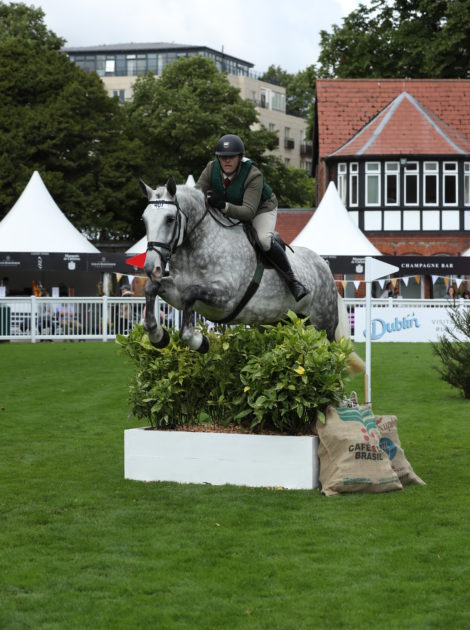
Breeding objectives & standards
To breed Irish Draught Horses with good conformation, movement and temperament that conform to the breed standard, which will make good quality, sound, versatile horses and be a foundation breed that, when crossed with other breeds, will produce performance horses.
Height:
Ideally Irish Draughts should stand between 158cms (15.2hh) and a maximum of 170cms (16.3hh) at maturity.
Bone:
Approximately (22.5cm) 9 inches of good strong, clean, flat bone. The amount of bone should be in proportion to the build of the horse.
Head:
Should be pleasant, not coarse or hatchet like. Wide forehead and kind eyes set well apart with large, long quality ears and plenty of room between the jaw bones.
Neck:
Good length of rein with head well set on, neck should be correctly muscled and well-shaped.
Front legs:
Long muscular forearms, short cannon bones with plenty of strong clean, flat bone, not back at the knee or tied in below the knee. Pasterns should be in proportion with good hoof pastern access. Hooves should not be boxy or large and flat, but hard and sound with plenty of room at the heel.
Shoulders:
A nice sloping shoulder neither loaded, nor too heavy, nor too short, with well-defined withers well set back.
Body, back and hindquarters:
Deep girth with a good spring of rib, strong back, loins and quarters. The croup and buttocks should be long and gently sloping. Hips should not be too wide.
Hind legs:
Clean hocks below strong gaskins set into good short shins. Should not be cow-hocked or wide apart at the hocks.
Action:
Should be straight and free not being heavy or ponderous. Movement should be active and strong from behind, showing good flexion and freedom of the shoulders. Colour: Any strong whole colour including bay, grey, chestnut, black, brown and dun. Excessive white markings not desirable.
Basic objectives of selection
To breed Irish Draught Horses with conformation, movement and temperament that conform to the breed standard, which will make good quality, sound and versatile horses.
There are a number of Irish Draught societies throughout the world, three of which are official daughter studbooks of the studbook of origin in Ireland, the Irish Draught Horse Society of Great Britain (IDHSGB) the Irish Draught Horse Society of Canada (IDHSC) and the Irish Draught Horse Society of North Americia (IDHSNA).
A copy of the Irish Draught Horse studbook breeding programme is available HERE.
